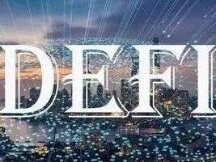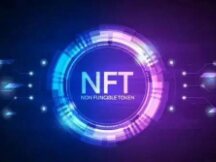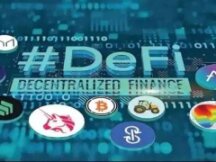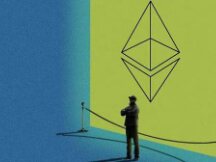The Economist: The DeFi market war has been hot.

For believers, open public blockchains offer a second opportunity to develop digital marketing. The fact that the applications created by these blockchains are collaborative and the data they collect is visible to all is a reminder of the best of designers online before most users got it. A "walled garden" by the tech giant. The "new rules" of digital marketing can respond to applications created by various blockchains that have achieved measurement and operational success over the years.
Perhaps the most important aspect of this digital business is DeFinance, which allows consumers to trade, borrow and save money. The battle for market share in this area is now fierce. Moreover, Ethereum, the leader of the DeFi platform, seems to be losing its quasi-monopoly status. This game shows how DeFi has been affected by war patterns that appear in other new technologies, consider Sony's Betamax and VHS war tapes in the 1970s, and how DeFi technology could be realized via lightning.
The idea behind DeFi is that blockchain (data distributed across multiple computers and stored cryptographically securely) can help transform middleware sites such as multinational banks and technology systems. The value of assets held in early stage financial assets (DeFi) has grown from less than $1 billion in early 2020 to over $200 billion today (see figure below).

Above: Development of treasure stored in the DeFi app after 2020. Data source: DeFi Llama
Until recently, the Ethereum blockchain was the controversial leader of all these DeFi projects. Ethereum was created in 2015 as a superior version of Bitcoin. Bitcoin records store exchange data for cryptocurrency transactions (such as BTC), providing proof of who owns what at all times. In contrast, Ethereum stores more data, such as lines of computer code. Number-programmed Ethereum applications recognize behaviors as they are written, eliminating the need for intermediaries. But just as Ethereum continued to improve Bitcoin, it was now governed by new and improved technology. Jeremy Allaire, president of Circle, the top-grossing company in US$USDC, said competition is like competition from a working computer.
Now blockchain technology is clunky and slow. Both Bitcoin and ETHereum use a technology called "PoW". Here, computers compete to solve mathematical problems in order to apply the changes in exchange for a gift. This slows down the network and limits capacity. Bitcoin can only perform 7 transactions per second and Ethereum can only perform 15. Trading is slow or expensive (sometimes both) when the network is busy. When there is a high demand for a full exchange from the Ethereum network, the exchange rate and payment time for the computer (node) accepting the exchange increases. You may need to spend $70 to convert $500 to ETH and wait a few minutes from one cryptocurrency wallet to another.
The developers have been working on the capabilities of Ethereum for a long time. In fact, one of the directives is to change the visibility of the blockchain. Later this year, the developers plan to turn Ethereum into a simple scalable mechanism called "PoS" (Proof of Stake). Another idea is to split the blockchain (in a process called "sharding"). These shards share this charge at full capacity. Additionally, some manufacturers are exploring ways to provide commercial products (eg rollups) to reduce costs that must be recognized directly (via the L1 mainnet).
The problem is that every improvement has a price. DeFi sponsors talk about the benefits of being able to do secure business without the distractions of a central platform. However, the increase in scalability must be weighed against the loss of stability or distribution. The centralization of the market before they hit the blockchain is usually done by the central government. It may be easier for a hacker to attack part of the blockchain than the whole blockchain. As a result, Ethereum developers are changing slowly.
These drops make the network different, which leads to more competitors. As of 2021, almost all closed assets in the DeFi application will be on the Ethereum network. However, according to a recent survey by JPMorgan Chase, the percentage of closed assets in Ethereum's DeFi application fell to 70% by the end of 2021. Having grown on other networks like Avalanche, Binance Smart Chain , Terra and Solana now use PoS to do simple tasks like Ethereum, but faster and cheaper blockchains. For example, two blockchain networks, Avalanche and Solana, process thousands of transactions per second.
What happened to the stability of the USD USDC indicates this change. USDC started on the Ethereum network three years ago, but has since started on several competing networks, including Algorand, Hedera, and Solana. Jeremy Allaire, president of Circle, the USDC-based company, said that while Ethereum exchange is constrained by price and speed, Solana's exchange "can hold" trading volume at the same time. Visa scale "with trial duration and exchange rate of up to 400 milliseconds. Up to 20 cents". Another DeFi application, like SushiSwap, an exchange developed by Ethereum, has also been developed on several other network blockchains.
JP Morgan's Nikolaos Panigirtzoglou writes that while some changes to Ethereum plans won't last longer than a year, "the risk is...that the Ethereum network will lose another market share." For Jérémy Allaire, the current context is full of competition. "Based on the communication, there is competition on Windows, iOS and Android, and there is competition on blockchain platforms." He thinks attracting top developers to build apps to achieve network effects is the ultimate win.
However, the sampling work cannot go that far here, in part because of the openness to public blockchains. Anyone can access the data it creates and view transaction numbers, allowing the app to write different data to different blockchains, as well as create "bridges" or cross multiple network blockchains . Some apps, such as the 1-inch exchange, have already "scanned" multiple blockchain exchanges to find the best rates for cryptocurrency trading, while "multi-chain" areas such as Polkadot and Cosmos Blockchain are "bridged". like" Ability to work on multiple networks.
As long as DeFi capacity is reached, competition for DeFi networks will intensify. But the idea that “winner takes all and has complete control of the digital business and its evolution” could one day take the form of a videotape.

Scan QR code with WeChat































